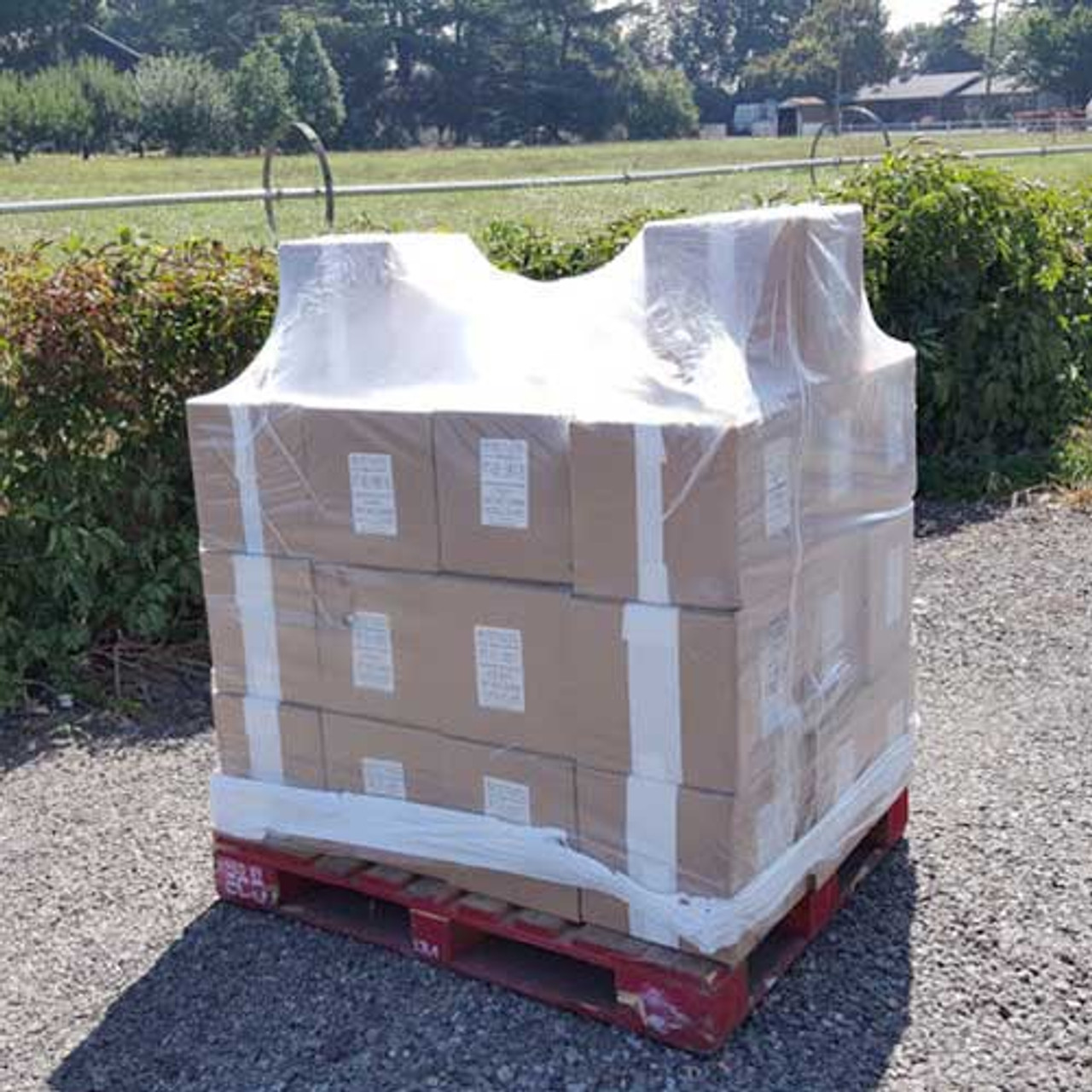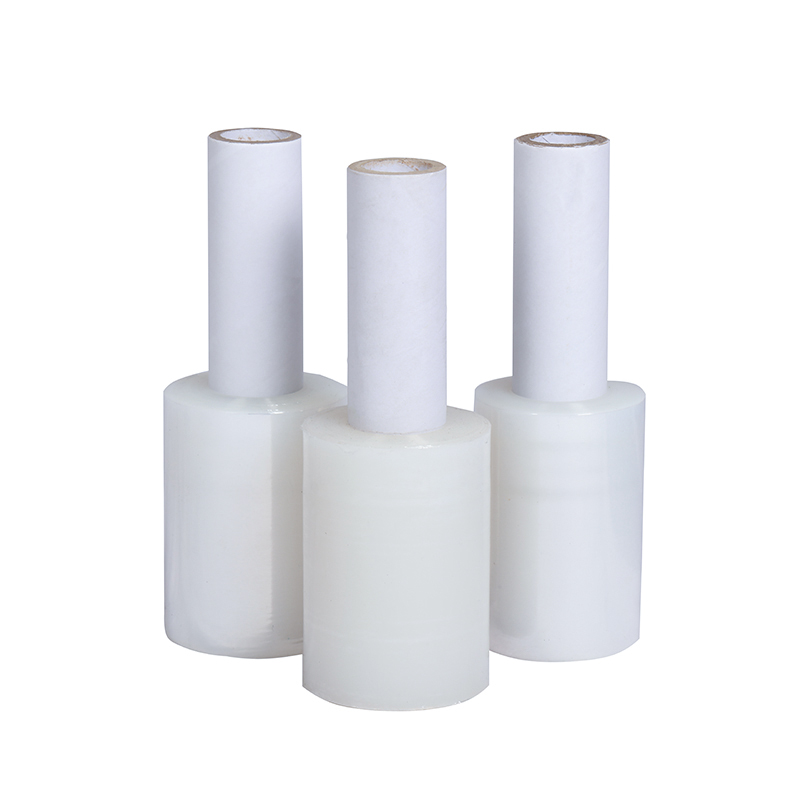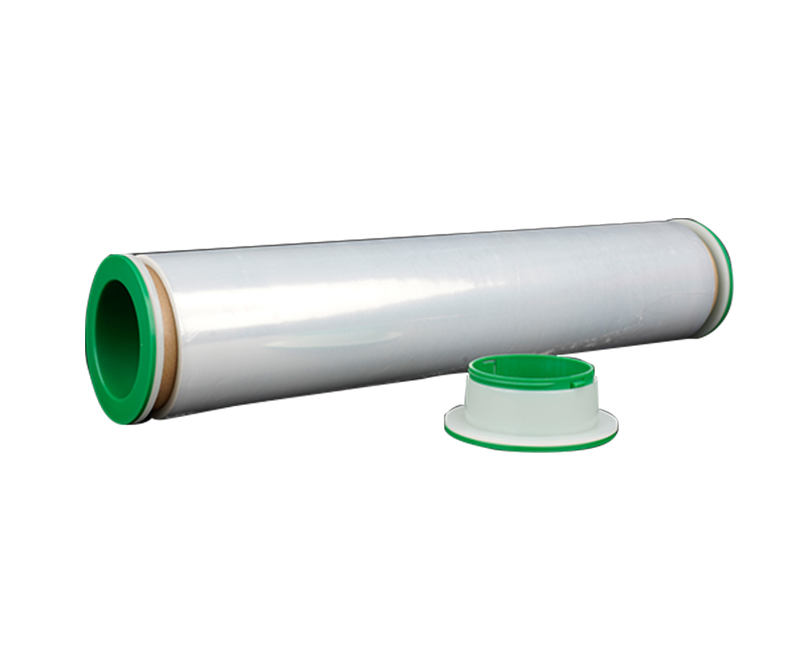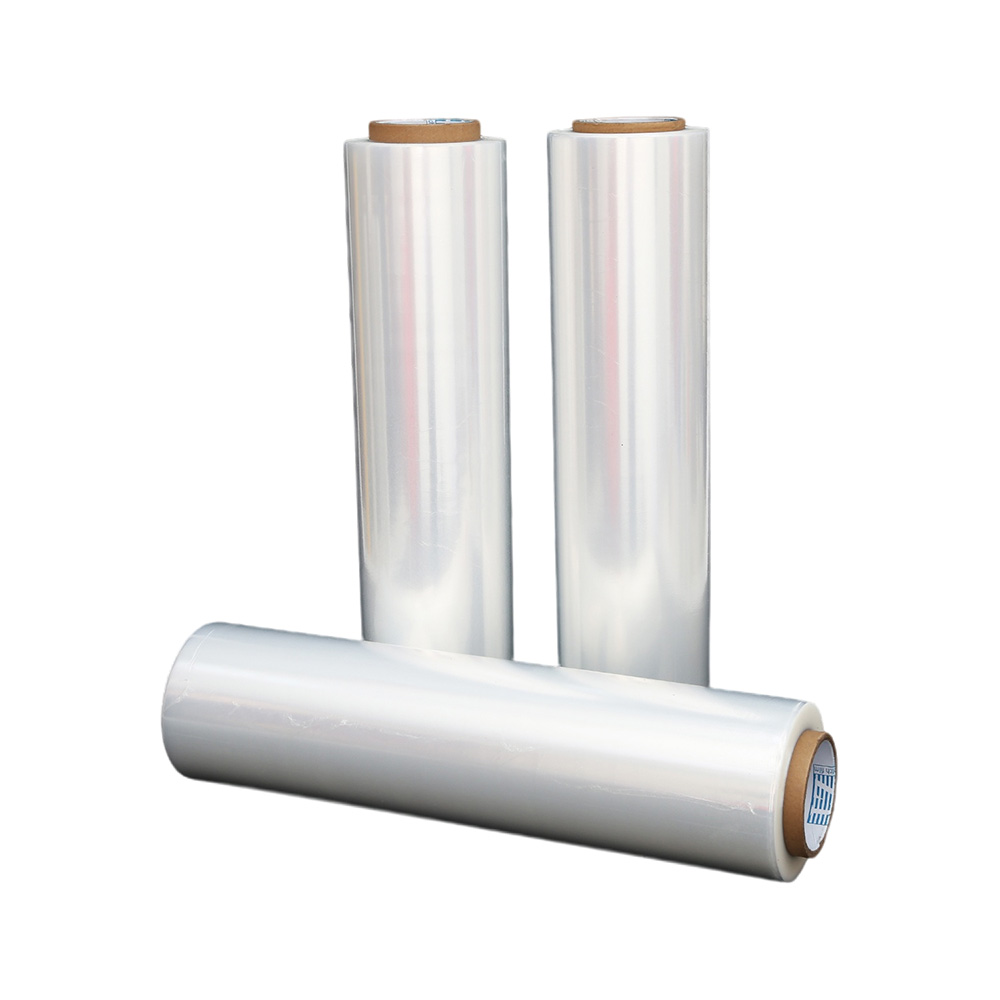Pallet Shrink Wrap: Common Misunderstandings Unpacked
Source:Pallet Shrink Wrap: Common Misunderstandings UnpackedTime:2025-07-30Visitors:
In the complex world of logistics and packaging, the terms "shrink wrap" and "stretch wrap" are often used interchangeably, leading to widespread confusion about their distinct properties and applications. However, the primary misunderstanding is that "pallet shrink wrap" is the same as "stretch wrap"; while both secure pallets, shrink wrap utilizes heat to conform tightly to a load, whereas stretch wrap relies on tension and elastic recovery without heat application. This fundamental difference is crucial for choosing the correct material and application process to ensure optimal load stability, protection, and cost-efficiency. This article aims to clarify these common misunderstandings, detailing what pallet shrink wrap truly is, how it works, and when it is the appropriate choice for your packaging needs.
Table of Contents
- Is "Pallet Shrink Wrap" the Same as "Stretch Wrap"?
- What Exactly is Pallet Shrink Wrap?
- How Does Pallet Shrink Wrap Work Compared to Stretch Wrap?
- What Are the Advantages of Pallet Shrink Wrap?
- What Are the Disadvantages and Limitations of Pallet Shrink Wrap?
- When is Pallet Shrink Wrap the Right Choice?
- What Are Common Mistakes When Using Pallet Shrink Wrap?
1. Is "Pallet Shrink Wrap" the Same as "Stretch Wrap"?
No, "pallet shrink wrap" is definitively not the same as "stretch wrap"; these are two distinct packaging materials with different properties and application methods, although both are used for securing palletized loads. The core difference lies in their mechanism of tightening: shrink wrap uses heat to conform, while stretch wrap uses tension and elastic memory.
This confusion is pervasive because both result in a wrapped pallet. However, shrink wrap is a loose cover until heat is applied, causing it to shrink tightly around the load, whereas stretch wrap is applied under tension and stretches to hold the load securely without external heat.

2. What Exactly is Pallet Shrink Wrap?
Pallet shrink wrap, often referred to as a shrink hood or bag, is a pre-formed plastic film that, when exposed to heat, dramatically shrinks and conforms tightly around a palletized load, creating a robust, often weather-resistant, and tamper-evident enclosure. Unlike stretch wrap, it is applied loosely over or around the pallet before heat is introduced.
Typically made from polyethylene (PE) resins, shrink film is engineered to exhibit a "memory" of its original, larger size. When heated beyond a certain temperature, the film attempts to revert to this original state, causing it to shrink and tightly encapsulate the items on the pallet.
3. How Does Pallet Shrink Wrap Work Compared to Stretch Wrap?
Pallet shrink wrap works by being applied loosely and then subjected to heat (via a heat gun or shrink tunnel), causing the film to contract tightly around the load, whereas stretch wrap is applied under tension and relies on its elastic recovery to secure items without any heat application. This fundamental difference in application mechanism leads to distinct load containment characteristics.
4. What Are the Advantages of Pallet Shrink Wrap?
Pallet shrink wrap offers several key advantages, including superior weather protection due to full encapsulation, excellent tamper evidence, a clean and professional appearance, and potentially higher puncture resistance after shrinking. These benefits make it suitable for specific applications where maximum protection and security are paramount.
- Total Encapsulation: Provides 360-degree protection, completely covering the top, sides, and bottom of the pallet. This offers superior defense against dust, dirt, and moisture ingress.
- Superior Weather Protection: Ideal for outdoor storage or prolonged exposure to harsh environmental conditions, providing a formidable barrier against rain, snow, and UV rays.
- Tamper Evidence: Once shrunk, any attempt to access the contents will visibly break the film, offering immediate and clear evidence of tampering.
- Clean & Professional Appearance: The taut, smooth finish of shrunk film can enhance the aesthetic appeal of palletized goods, which is beneficial for retail displays or high-value products.
- Load Stability for Irregular Loads: The conforming nature of shrink film allows it to tightly secure highly irregular or mixed loads that might be challenging for stretch wrap alone.
- High Puncture Resistance (Post-Shrink): After shrinking, the film often becomes very taut and durable, providing robust resistance against punctures and tears from external forces.
5. What Are the Disadvantages and Limitations of Pallet Shrink Wrap?
Despite its benefits, pallet shrink wrap has notable disadvantages, including the necessity for expensive heat application equipment, higher energy consumption, a slower application process, and potential risks of product damage from heat. These limitations often make it less practical for high-volume, general-purpose palletizing compared to stretch wrap.
- Equipment & Energy Costs: Requires significant investment in heat tunnels, ovens, or heat guns, along with higher ongoing energy costs for heating.
- Slower Application: The heating and cooling cycle makes the wrapping process significantly slower than modern stretch wrapping machines, impacting throughput.
- Product Sensitivity to Heat: Products sensitive to high temperatures (e.g., certain foods, electronics, chemicals) cannot be shrink-wrapped without risk of damage.
- Less Breathable: The complete enclosure can trap moisture inside if products are not completely dry, potentially leading to condensation or mildew.
- Film Material Usage: Shrink film often needs to be a heavier gauge than stretch film to withstand the heating process and provide desired strength, potentially meaning more plastic per pallet.
- Disposal: The thicker nature of some shrink films can sometimes make them less desirable for recycling than thinner stretch films, although both are typically #4 LDPE.
6. When is Pallet Shrink Wrap the Right Choice?
Pallet shrink wrap is the right choice when absolute total enclosure, maximum weather protection for outdoor storage, enhanced tamper evidence, or a highly aesthetic, form-fitting package is required for the palletized goods. It excels in niche applications where its unique properties outweigh the higher operational costs.
- Outdoor Storage or Harsh Environments: For pallets that will be stored outdoors for extended periods or exposed to extreme weather.
- High-Value or Sensitive Goods: When enhanced security and clear tamper evidence are paramount to protect against pilferage or unauthorized access.
- Irregularly Shaped Loads: For products with unusual dimensions or protrusions that require a custom, conforming fit for stability.
- Retail Display Packaging: When the pallet itself serves as a retail display, and a clean, tightly sealed, professional appearance is desired.
- Complete Unitization: When the entire pallet load, including the top, needs to be fully encapsulated for cleanliness or containment of fine powders/particles.
- Bulk Bags (FIBCs): Often used to overwrap large bulk bags or super sacks for weather protection and stability.
7. What Are Common Mistakes When Using Pallet Shrink Wrap?
Common mistakes when using pallet shrink wrap include improper heat application (overheating or underheating), selecting an incorrect film gauge, failing to provide adequate venting for trapped air, and not accounting for energy and equipment costs in total packaging expenses. These errors can lead to poor load protection, wasted film, or damaged products.
-
Incorrect Heat Application:
- Underheating: Results in loose, baggy film that doesn't fully conform or provide adequate containment.
- Overheating: Can cause film to burn, melt holes, or become brittle, damaging the film and potentially the product.
- Wrong Film Gauge: Using film that is too thin might result in tears or insufficient strength, while film that is too thick wastes material and energy.
- Lack of Venting: Trapped air inside the shrink wrap can cause "pillowing" during transit or storage, reducing load stability and increasing the risk of bursting. Proper venting (e.g., small holes) allows air to escape.
- Not Accounting for Energy & Equipment Costs: Focusing solely on film cost without considering the capital expenditure for heat equipment and the ongoing energy consumption.
- Confusing with Stretch Wrap: Misapplying shrink wrap (e.g., trying to stretch it on a machine) or trying to apply stretch wrap where shrink wrap is truly needed.
- Inadequate Product Preparation: Failing to clean or properly stack the load, which can lead to unsightly or unstable results post-shrink.
Conclusion
The distinction between "pallet shrink wrap" and "stretch wrap" is more than just semantics; it represents fundamentally different approaches to pallet packaging, each with its unique advantages and specific ideal applications. While stretch wrap relies on tension and elastic recovery for efficient load unitization, shrink wrap utilizes heat-induced contraction for total encapsulation, superior weather protection, and enhanced tamper evidence. Understanding these core differences and avoiding common misunderstandings allows businesses to select the correct method, ensuring optimal product protection, operational efficiency, and a clearer pathway to managing packaging costs and performance.
At Dongguan Zhiteng Plastic Product Co. Ltd., we pride ourselves on being experts in advanced packaging solutions, clarifying common industry confusions. With 17 years of experience in manufacturing high-quality films, we specialize primarily in stretch film, offering a diverse range of machine and hand films engineered for superior load containment and efficiency without the need for heat application. We focus on providing high-performance solutions that simplify your logistics, reduce material costs through optimized stretch, and deliver reliable protection for your palletized goods, helping you choose the right film for the right job every time.
Recommended Products
Ranked in the same article
- how to use the stretch film technology to r
- How can we get detailed price list?
- Five common quality problems of PE protecti
- Plastic film degradation
- How to guarantee punctual shipment for our
- Gauge to Micron and Millimetre Conversion G
- What is the difference between stretch film
- Testing the permeability of stretch film
- Stretch film temperature requirements
- Electrical wire film VS electrostatic film
- Why insufficient transparency of stretch w
Latest news articles
- The significance of using PE electric wire
- What is the Difference Between Magic Tape a
- How to check the quality of PE stretch film
- Bundling Stretch Film: Optimize Your Packag
- How can PE stretch film be cut better?
- The 133rd Spring Canton Fair
- The Ultimate Guide to Choosing the Right Ma
- Stretch Film Wrap: Unraveling Its Benefits
- Advantages of white engineering film
- Factors affecting viscosity of PE stretch f
- What Properties Ensure Effective Cold Chain



